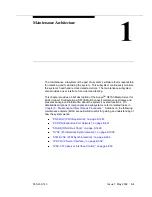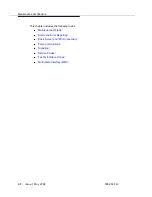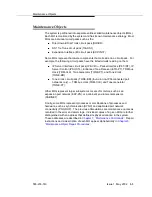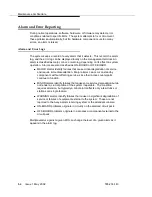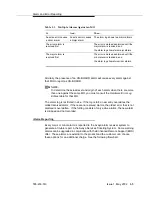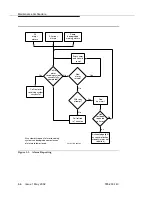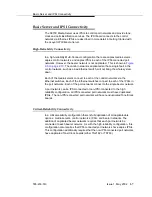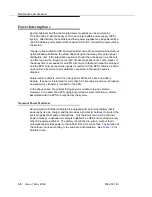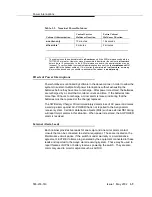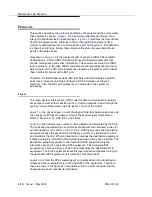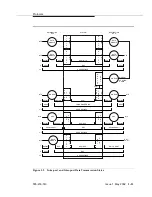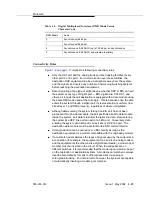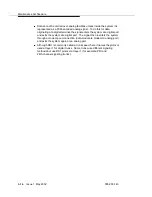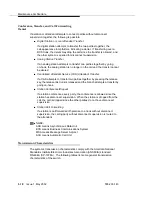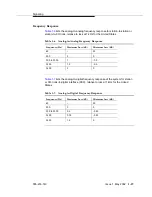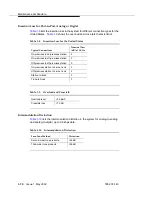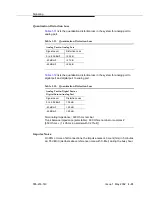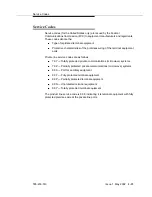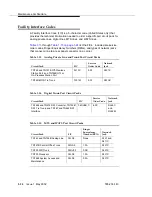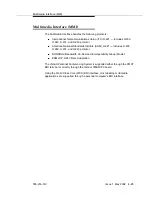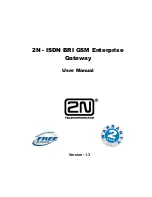
Protocols
Issue 1 May 2002
1-15
555-233-143
Connectivity Rules
implies the following connectivity rules:
■
Only the DS1 port and the analog trunk port are trunking facilities (every
other port is a line port). For communication over these facilities, the
destination DCE equipment can be a hemisphere away from the system,
and the signal can traverse any number of intervening switching systems
before reaching the destination equipment.
■
Data originating at any type of digital device, whether DCP or BRI, can exit
the system at any type of digital port — BRI, digital-line, PRI, DS1, and
others; as long as the call destination is equipped with a data module using
the same DMI mode used at the call origin. This is because once the data
enters the system through a digital port, its representation is uniform (raw
bits at layer 1, and DMI at level 2), regardless of where it originated.
■
Although data entering the system through an EIA port has not been
processed through a data module, the port itself has a built-in data module.
Inside the system, port data is identical to digital line data. Data entering
the system at a DCP line port can exit at an EIA port. Conversely, data
entering the system at an EIA port can exit at any DCP line port. The
destination data module must be set for Mode-2 DMI communication.
■
Voice-grade data can be carried over a DS1 facility as long as the
destination equipment is a modem compatible with the originating modem.
■
If a mismatch exists between the types of signals used by the endpoints in
a connection (for example, the equipment at one end is an analog modem,
and the equipment at the other end is a digital data module), a modem-pool
member must be inserted in the circuit. When the endpoints are on
different switches, it is recommended that the modem-pool member be put
on the origination or destination system. A modem-pool member is always
inserted automatically for calls to off-premises sites via analog or
voice-grade trunking. For internal calls, however, the systems are capable
of automatically inserting a modem-pool member.
Table 1-5.
Digital Multiplexed Interface (DMI) Mode Versus
Character Code
DMI Mode
Code
0
Synchronous (64 kbps)
1
Synchronous (56 kbps)
2
Asynchronous 8-bit ASCII (up to 19.2 kbps), and synchronous
3
Asynchronous 8-bit ASCII, and private proprietary
Summary of Contents for S8700 Series
Page 50: ...Maintenance Architecture 555 233 143 1 26 Issue 1 May 2002 ...
Page 74: ...Initialization and Recovery 555 233 143 3 12 Issue 1 May 2002 ...
Page 186: ...Alarms Errors and Troubleshooting 555 233 143 4 112 Issue 1 May 2002 ...
Page 232: ...Additional Maintenance Procedures 555 233 143 5 46 Issue 1 May 2002 ...
Page 635: ...status psa Issue 1 May 2002 7 379 555 233 143 status psa See status tti on page 7 406 ...
Page 722: ...Maintenance Commands 555 233 143 7 466 Issue 1 May 2002 ...

